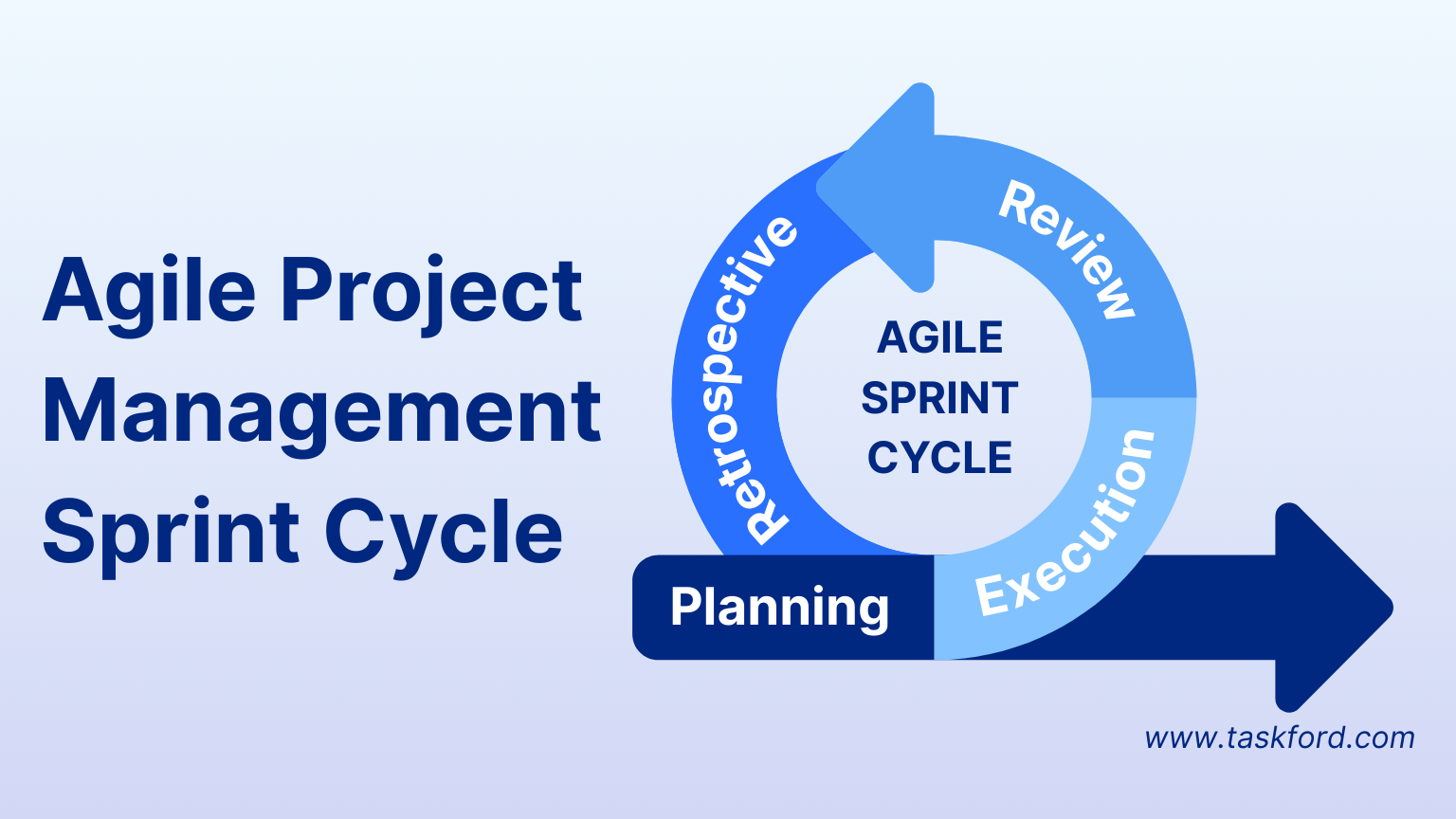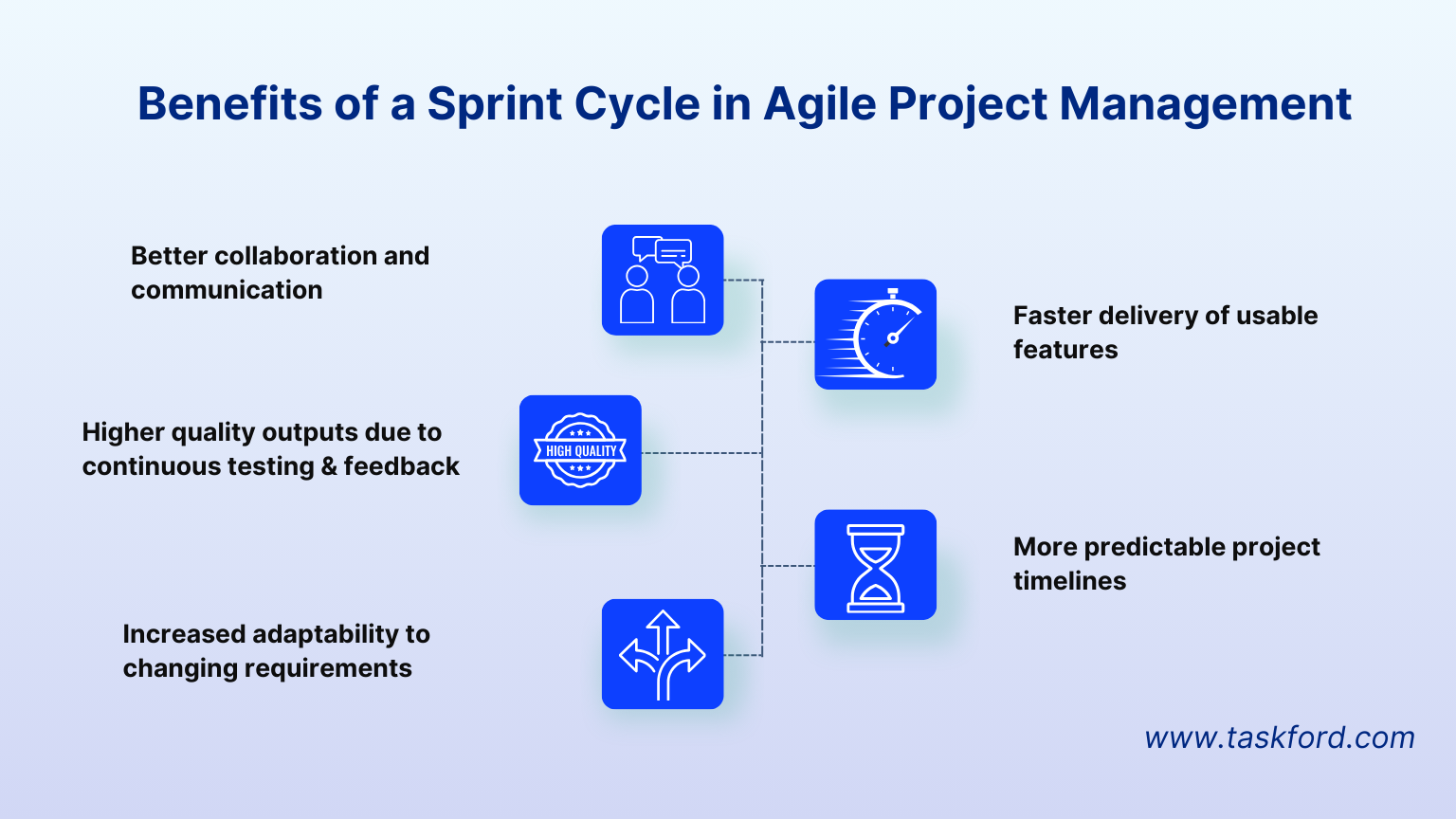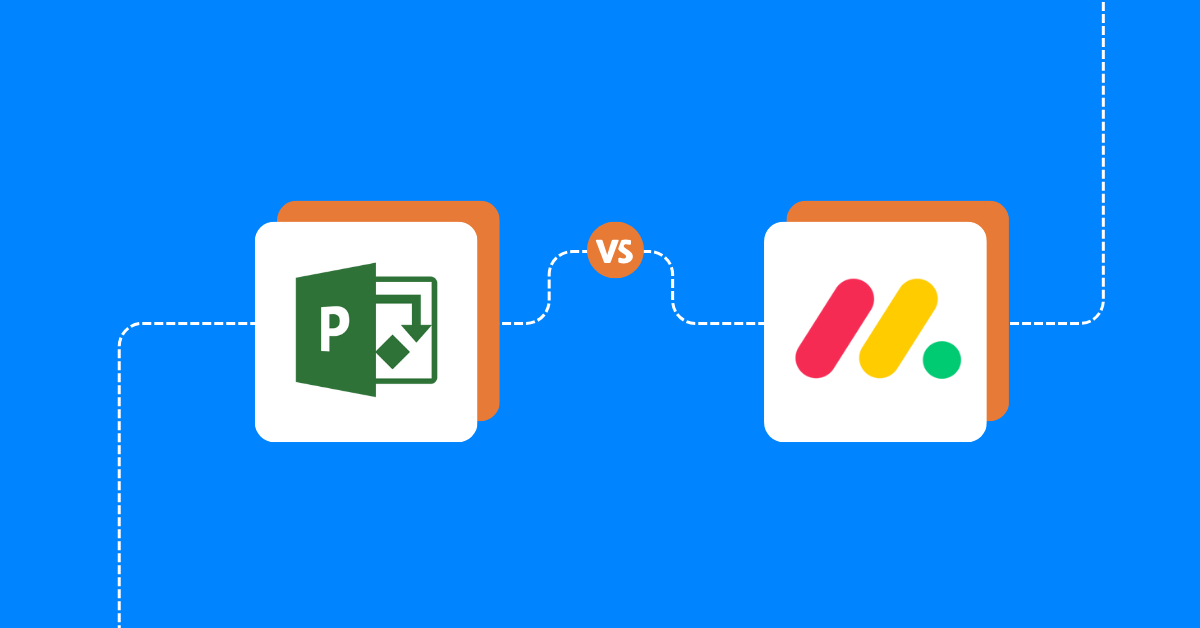Agile Project Management Sprint Cycle: From Planning to Retrospective
Breaking down the Agile Project Management Sprint Cycle and learn how sprints drive value with practical examples and boost your team’s efficiency.
In agile project management, sprints are short, focused cycles where teams turn plans into real results. By breaking work into these manageable periods, teams stay organized, adapt quickly, and deliver value faster. However, simply running sprints isn’t enough. Understanding the full agile project management sprint cycle is essential for success. Without this foundation, teams risk miscommunication, wasted effort, and unfinished work. In this blog, we will break down the agile sprint cycle with real-world examples to help you deliver better results.
What is An Agile Project Management Sprint?

An agile project management sprint is a short, time-boxed work cycle, typically lasting 1 to 4 weeks, during which a team focuses on completing a defined set of tasks from the project backlog. Each sprint aims to deliver a usable and valuable product increment, making it a core component of the agile metholody.
Unlike traditional project planning techniques, which often follow a linear, step-by-step process (also known as the waterfall model), sprints embrace change and encourage frequent reassessment. In a sprint, the team focuses on a fixed set of tasks, delivers them, reflects on the results, and improves the process for the next cycle. This ongoing loop helps teams respond quickly to customer feedback, market changes, or shifting priorities.
Take a software development team, for example. They might use a two-week Agile Project Management Sprint to build a new app feature, like a search tool. During those two weeks, they design, code, and test it, delivering a working version by the end. This incremental value, delivering something functional step-by-step, is what makes sprints so powerful in Agile. It’s all about keeping momentum, staying flexible, and ensuring progress without overwhelming the team. So, if you’ve ever asked, “What is a sprint in Agile?” - it’s this focused burst of effort that drives results.
Breaking Down the Agile Project Management Sprint Cycle with Examples
Every Sprint Cycle follows a clear rhythm that keeps teams on track and delivering value. It’s a structured process split into four key phases: Planning, Execution, Review, and Retrospective. Together, these stages form a roadmap that guides teams through focused work, collaboration, and continuous improvement - all within a tight timeframe, usually 1 to 4 weeks. Whether you’re new to Agile or refining your approach, understanding these phases is the first step to mastering sprints. Let’s break them down, with practical insights to show how they work in action.

1. Sprint Planning
The sprint kicks off with Sprint planning, where the team lays the groundwork for what’s ahead. This phase is all about defining clear goals, picking tasks from the product backlog, and estimating the effort needed to get them done. It’s a collaborative effort - team members discuss priorities, clarify requirements, and agree on what “success” looks like by the sprint’s end. Done right, planning sets a focused tone and ensures everyone’s aligned.
For example, imagine a marketing team gearing up to launch a campaign. During sprint planning, they decide on tasks like “design ads” and “write copy,” pulling these from their backlog. They estimate each task’s effort, assign roles, and set a goal: a polished campaign ready for review in two weeks. This actionable approach answers the common question, “How to plan an Agile sprint?” - start with clarity, prioritize ruthlessly, and keep the scope manageable.
2. Sprint Execution
Once planning’s done, it’s time for execution - the phase where the team rolls up their sleeves and gets to work. This is where tasks come to life through daily collaboration, often fueled by quick stand-up meetings (also called daily scrums). The focus is on steady progress: tackling assignments, solving problems, and tracking how things are moving along.
Picture a product team coding a new feature. Over a two-week sprint, they hold daily 15-minute stand-ups to share updates - “I finished the login UI yesterday,” or “I’m stuck on a bug, need help.” These check-ins keep blockers from derailing the sprint, ensuring the team delivers a working feature by the end. Terms like “daily scrum” pop up often in this phase, making it a key part of Agile momentum.
3. Sprint Review
The Sprint review is the big reveal. At the end of the sprint, the team gathers with stakeholders to demo what they’ve built - think of it as a show-and-tell for the work completed. It’s not just about bragging rights; it’s a chance to get feedback, spot adjustments, and ensure the output aligns with expectations. This meeting keeps the project on course and the team accountable.
Take an e-commerce team, for instance. They’ve spent two weeks building a new checkout feature and now present it to the product owner in the sprint review. The owner tests it, likes the flow, but suggests tweaking the button color. That feedback shapes the next sprint. If you’ve ever wondered, “What happens in a sprint review?”—it’s this mix of celebration and constructive input that drives progress.
4. Sprint Retrospective
The final stop in the cycle is the Sprint retrospective, where the team pauses to reflect. This isn’t about pointing fingers - it’s about asking, “What went well? What didn’t? How can we do better?” The goal is to learn from the sprint just finished and tweak the process for the next one. It’s Agile’s built-in mechanism for growth.
Consider a design team wrapping up a sprint. In their retrospective, they discuss how mockup approvals lagged, causing delays. They agree to set clearer deadlines next time and test the fix in the upcoming sprint. This practical step answers queries like “How to run a sprint retrospective" - keep it honest, focus on solutions, and commit to small, impactful changes.
The Role of Sprint Cycles in Agile Project Management
A study on Agile Project Management Impacts Software Development Team Productivity on ResearchGate found that Agile methodologies, particularly Scrum with sprint cycles, positively impact team productivity. Adopting Agile enhances a team’s ability to adapt to changes and boosts collaboration, leading to improved overall performance.
Sprint cycles are the heartbeat of this methodology, shaping how teams organize their work, collaborate, and deliver value. Each sprint creates a focused window where a team can concentrate on achieving specific goals without being overwhelmed by the entire scope of a project.
At the core of agile is the principle of iterative progress; instead of waiting months to deliver a finished product, teams work in short sprint cycles, constantly delivering smaller increments that provide real value. This approach helps reduce risk, ensures better alignment with customer needs, and keeps teams motivated by achieving frequent milestones.
Sprint cycles also drive essential agile practices like:
- Prioritization: Only the most important tasks make it into the sprint backlog, ensuring teams focus on what matters most.
- Time-Boxing: By limiting work to a fixed period, sprint cycles create urgency, reduce procrastination, and improve time management.
- Feedback Loops: Every sprint ends with a review and retrospective, allowing teams to gather feedback and continuously improve.
Benefits of a Sprint Cycle in Agile Project Management

Sprints are crucial because they help teams break down complex projects into smaller, manageable pieces. Instead of planning every detail upfront, teams continuously adapt through iterative work cycles. This flexibility is one of the key reasons agile has become the go-to approach for modern project management.
The benefits of running effective sprints go beyond speed. Teams working with sprints often experience:
- Better collaboration and communication
- Faster delivery of usable features
- Higher quality outputs due to continuous testing and feedback
- More predictable project timelines
- Increased adaptability to changing requirements
By mastering the sprint cycle, teams can consistently deliver value while staying aligned with both business goals and customer needs. In short, sprint cycles help agile teams stay flexible, focused, and customer-centric, turning uncertainty into an opportunity for continuous improvement.
Conclusion
Mastering the Agile Project Management Sprint Cycle is the key to unlocking the full potential of Agile. From the focused clarity of sprint planning to the hands-on momentum of execution, the showcase of review, and the reflective power of the retrospective, each phase builds on the last to deliver value fast and effectively. Sprints aren’t just about speed—they’re about breaking work into manageable steps, adapting to change, and improving with every cycle. Whether you’re a software team coding a feature or a marketing crew launching a campaign, understanding and refining this process can transform how you work.
Making work simpler,
smarter, and more connected
Join our waitlist and be notified first.

Related Blog
Subscribe for Expert Tips
Unlock expert insights and stay ahead with TaskFord. Sign up now to receive valuable tips, strategies, and updates directly in your inbox.






